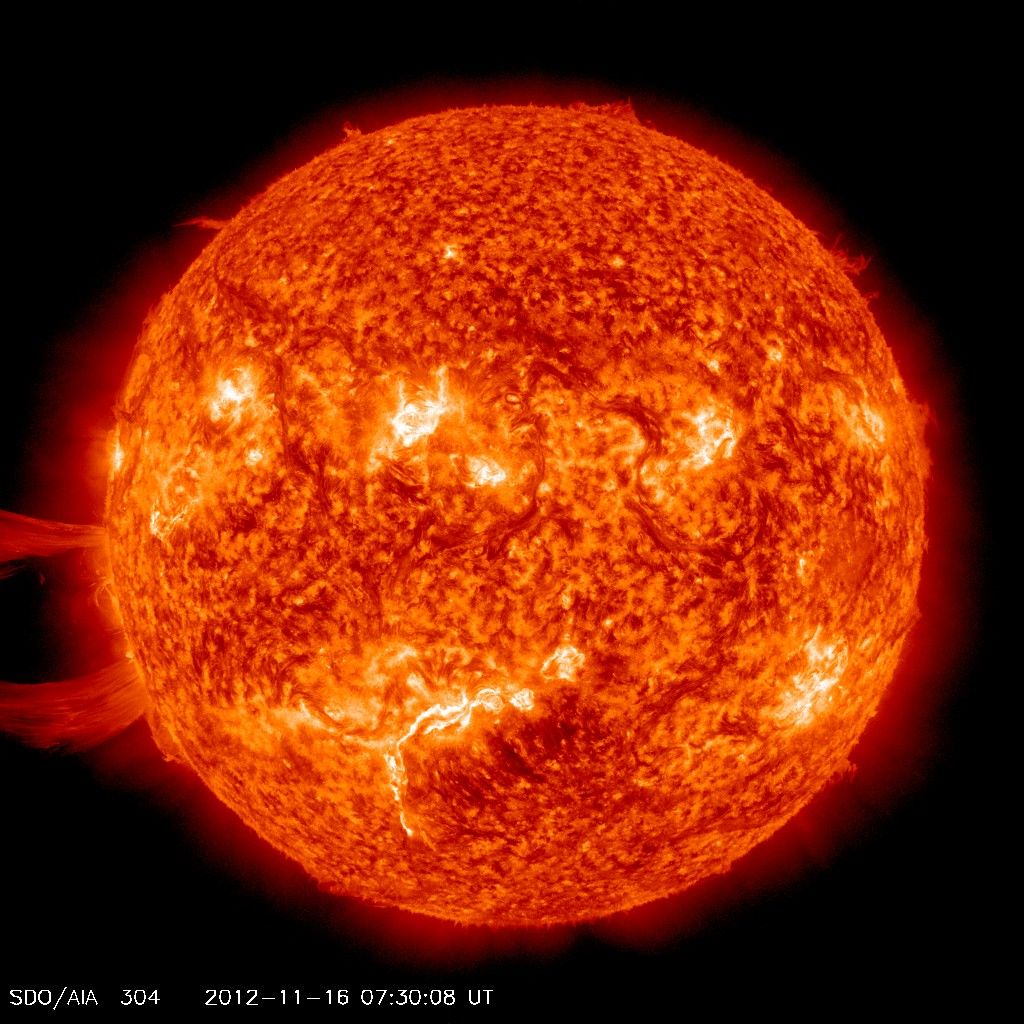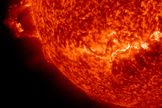Giant Sun Eruption Captured in NASA Video

The sun unleashed a monster eruption of super-hot plasma Friday (Nov. 16) in back-to-back solar storms captured on camera by a NASA spacecraft.
The giant sun eruption, called a solar prominence, occurred at 1 a.m. EST (0600 GMT), with another event flaring up four hours later. The prominences was so large, it expanded beyond the camera view of NASA's Solar Dynamics Observatory (SDO), which captured high-definition video of the solar eruption.
In the video, a colossal loop of glowing red plasma erupts from the lower left of the sun, arcing up and out of frame as it blasts away from the star.

"The red-glowing looped material is plasma, a hot gas made of electrically charged hydrogen and helium," officials with NASA's Goddard Space Flight Center, which oversees the SDO mission, explained in a description. "The prominence plasma flows along a tangled and twisted structure of magnetic fields generated by the sun’s internal dynamo. An erupting prominence occurs when such a structure becomes unstable and bursts outward, releasing the plasma."
Friday's solar eruption does not appear to be aimed at Earth, so will likely have little effect on our planet. But that was not the case earlier this week when a powerful solar flare erupted on Monday (Nov. 12). That flare registered as an M6-class eruption, a moderate but still intense solar event.
On Tuesday and Wednesday (Nov. 13 and 14), space weather conditions sparked a geomagnetic storm that supercharged the Earth's auroras, creating spectacular northern lights displays for observers at high latitudes.
When aimed directly at Earth, the most powerful solar flares and eruptions can pose a threat to satellites and astronauts in orbit, and also interfere with communication, navigation and power systems on the ground.
Sign up for the Live Science daily newsletter now
Get the world’s most fascinating discoveries delivered straight to your inbox.
The sun is currently in the middle of an active phase of its 11-year solar weather cycle. The current cycle is called Solar Cycle 24 and is expected to peak in 2013.
This story was provided by SPACE.com, a sister site to Live Science. You can follow SPACE.com Managing Editor Tariq Malik on Twitter @tariqjmalik and SPACE.com on Twitter @Spacedotcom. We're also on Facebook & Google+.













